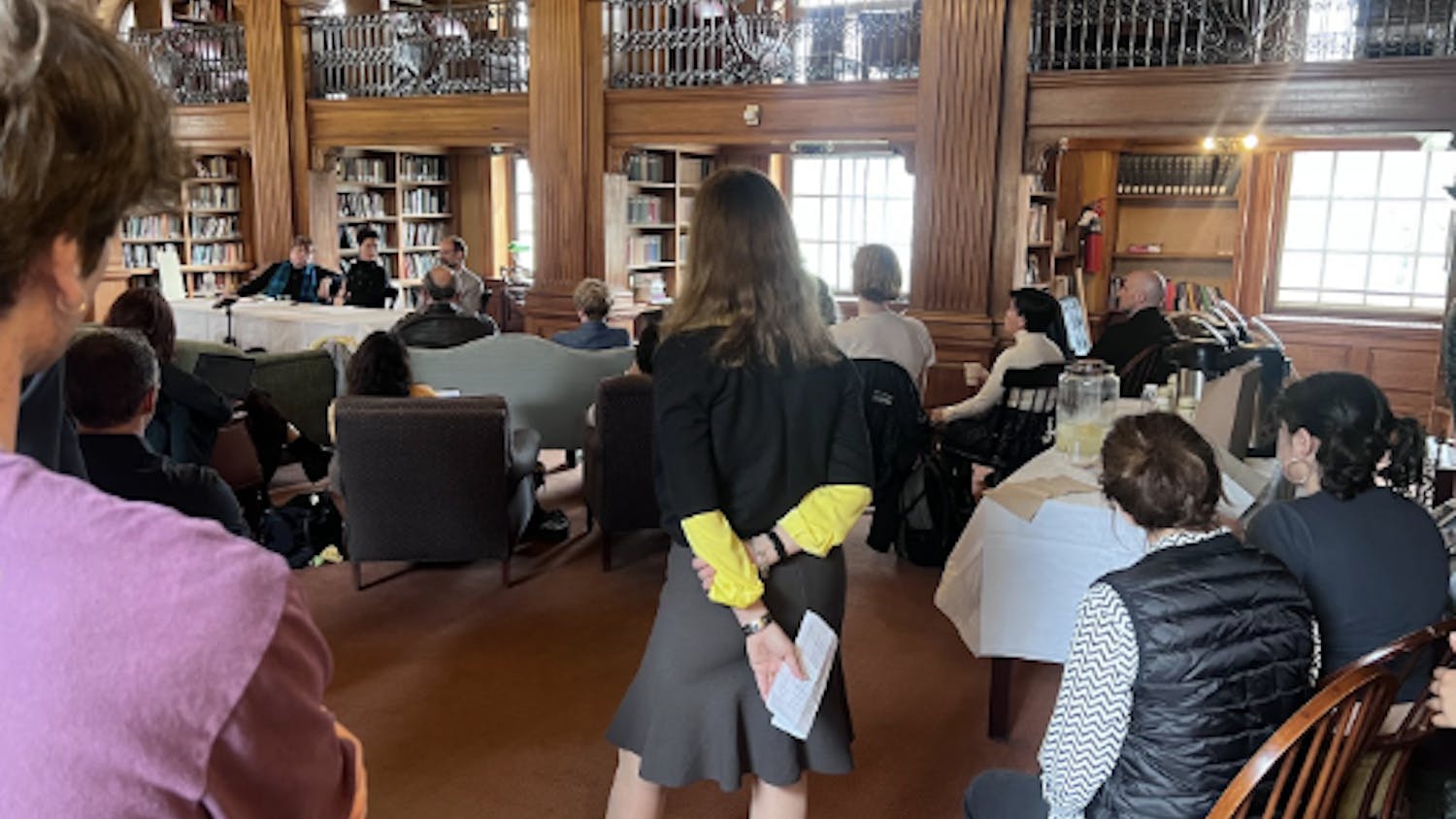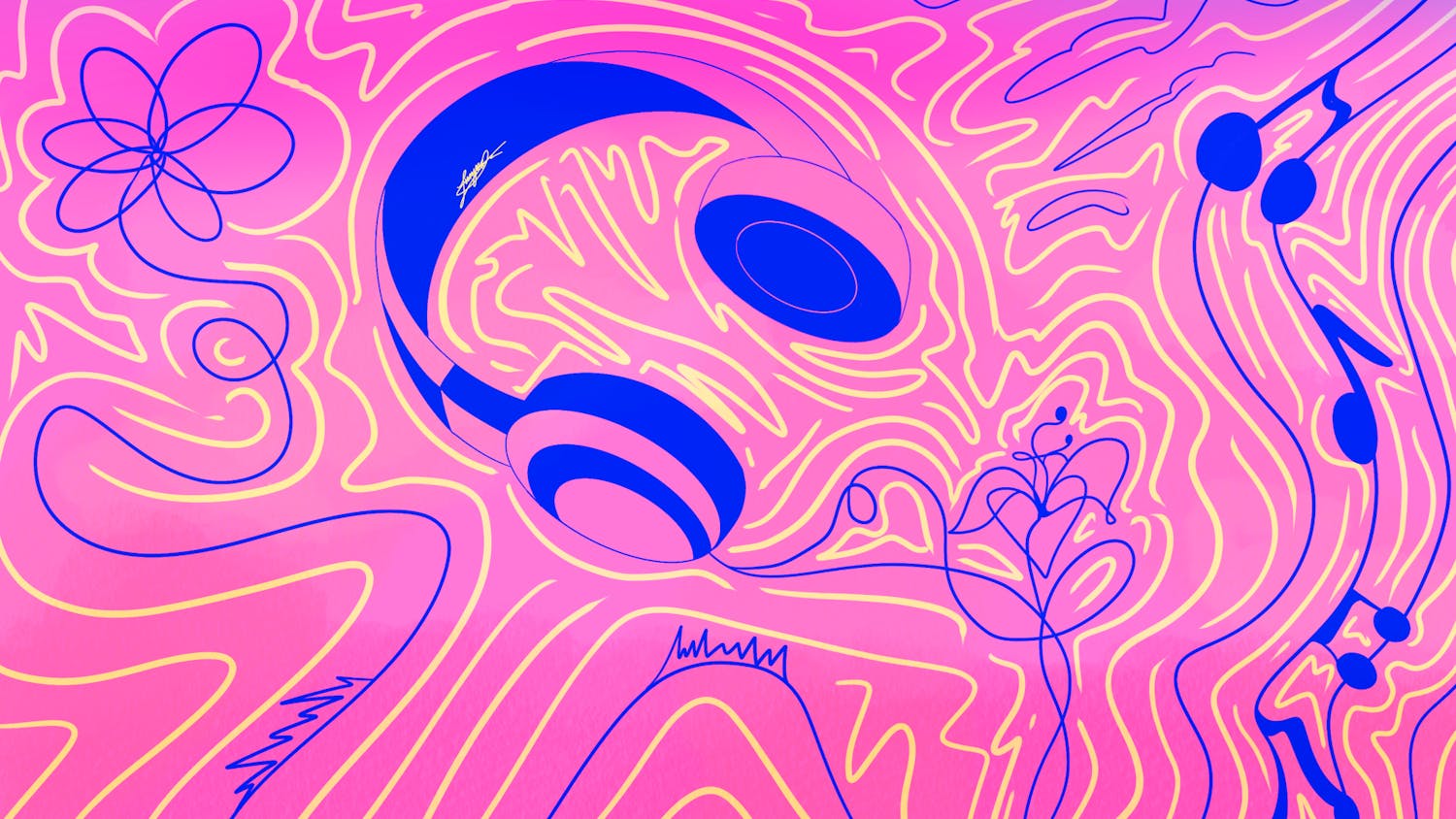Assyrian reliefs and Schubert, American landscape and Mozart — as unlikely as the combinations are, a Hood Museum event will link art with classical music on Friday.
“Opera Inspired by Art,” a walk-through event, will take the audience through the museum’s first-floor gallery. After a curator introduces a piece, executive director of Lebanon-based Opera North Pamela Pantos will elaborate on the connection between visual and vocal art. Finally, Opera North singers will perform the prepared aria.
An effort to integrate the arts, adding another dimension to the Hood viewing experience, inspired the collaboration, Hood public relations coordinator Sharon Reed said.
Pantos described the interaction as opera “framing the art in the most vivid way possible so that it remains in the minds of the audience.”
An event combining opera and art has occurred almost annually since 2010, Reed said.
In the first collaboration in 2010, Opera North performed Gian Carlo Menotti’s one-act opera “The Telephone,” a humorous opera sketch, alongside the Hood’s “Made in Hollywood” exhibition, a collection of portraits and stills of Hollywood from 1920 to 1960.
Although in past events, opera selections were catered toward the particular collection exhibited at the time, this summer’s exhibition does not have as unified a theme, Pantos said. Instead, “Opera Inspired by Art” seeks to feature pieces from the Hood’s permanent collection.
Linking music to individual pieces of art rather than a whole program will be a very different experience.
“Opera does have a visual component, but obviously your ears are in tune to what’s going on in the music,” Hood director Michael Taylor said. “I’m just interested to see whether that will affect the way an art piece is viewed.”
At the event, Taylor will introduce two of the six pieces — Pietro Perugino’s “Virgin and Child with Saints,” and Pablo Picasso’s “Guitar on a Table.” Viewers can relate to Perugino’s Renaissance piece more easily, Taylor said, since the painting maintains traditional perspective, proportions and distance. “Guitar on a Table,” on the other hand, is a 1912 Cubist painting characterized by fragmentation and disjointedness.
Opera North will perform “Hallelujah” alongside “Virgin and Child with Saints,” as the religious pieces are connected thematically. A song by Spanish composer Manuel de Falla will accompany to Picasso’s piece, playing upon Picasso’s personal life.
Taylor said the contrast between Modernism and the Renaissance reflected in the vocal art will bring a new perspective.
“You’re looking to best feature the pieces that are there and make the connection that’s going to be distinctive but visceral,” Pantos said.
Other museums, including the San Francisco Museum of Modern Art and the Owsley Museum of Art at Ball State University, have also experimented with coupling music and visual art.
Artists often combine music and visual art to construct a dynamic art experience.
Montgomery Fellow Enrique Martínez Celaya frequently combines music with art in his projects. He uses sound, or the lack of sound, to emphasize the ambience and mood of his works, he said.
For example, his 2004 piece “Schneebett” — German for “snow bed” — was inspired by a description of Beethoven’s deathbed.
The work debuted at the Berlin Philharmonic in two parts: viewers enjoyed the art installation that contained a bed coated in frost before listening to Beethoven’s “Symphony No. 9,” performed by the Berlin-based orchestra.
For “The Pearl,” a project that opened last year, Celaya composed a simple piano piece that softly drifted through the exhibition. Though he was not musically trained, it was important that he composed the melody, Celaya said.
“‘The Pearl’ was a mapping of the idea of home, and I wanted that music to reveal how empty the room was,” he said. “In some ways sound makes things feel emptier than just silence.”
Even when working in his own studio, Celaya often listens to music to amplify a certain feeling and atmosphere.
Director of exhibitions and studio arts lecturer Gerald Auten said he constantly listens to music when working in his studio.
“All kinds of art, whether it is music or visual art, has this internal logic that somehow relates to the human experience but just organized differently,” he said.
Other professors combine visual art and music in the classroom. For a music course called “Brahms, Berlioz and the Romantic Imagination,” music professor Melinda O’Neal invited art history professor Kate Hornstein to speak on French Romantic art.
Music and visual art are often symbolically, thematically and historically related, O’Neal said.
University of Prince Edward Island psychology professor Annabel Cohen, who has studied music’s influence on the brain and the relationship between music and film, said music often triggers emotional responses, while visual stimuli are associated with meaning. Pairing the two could produce a difference in how the art is interpreted, she said.
“There’s some research to support the additivity of musical sources of information and visual sources of information,” she said.
An experiment conducted for a Ph.D. dissertation written by University of Kentucky graduate student Jennifer Shank indicated that subjects who observed projections of paintings scored significantly higher on a music listening skills test than a control group.
But as the study notes, “[a]rt and music, although often associated, are rarely studied together or used as a tool to teach skills in the other.”
“Opera Inspired by Art” is a pre-registered event open to 25 people.



